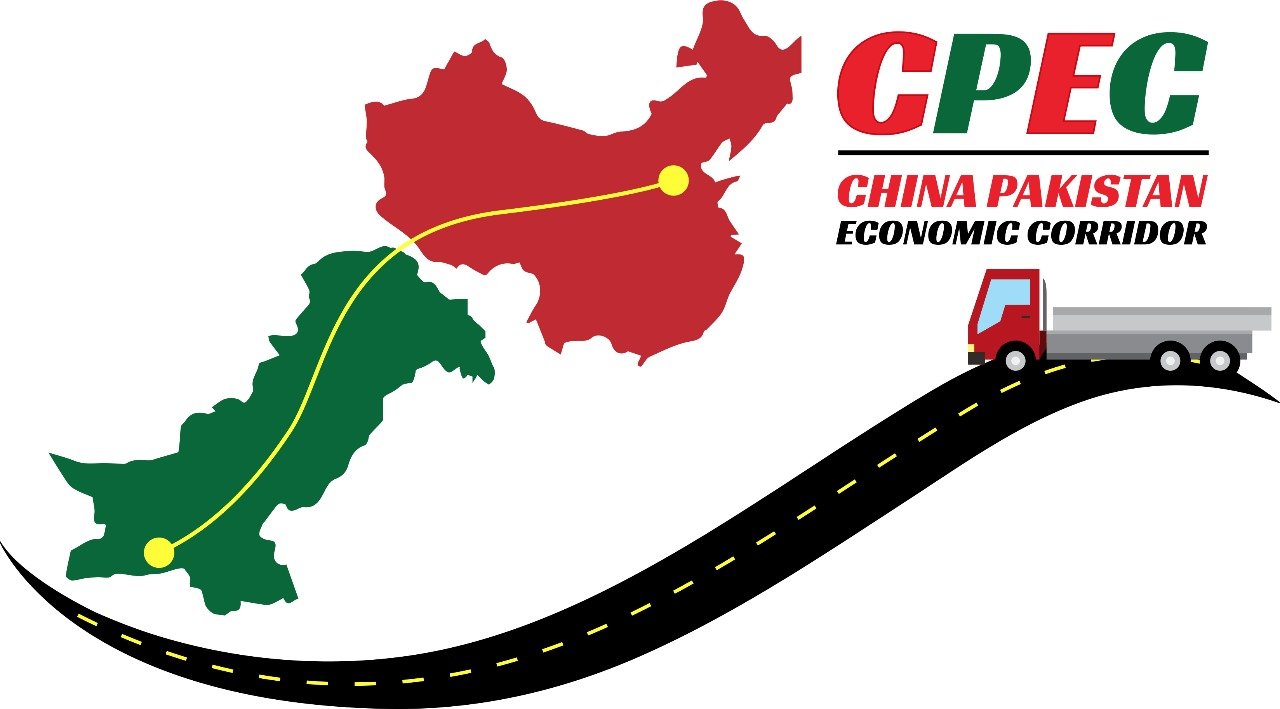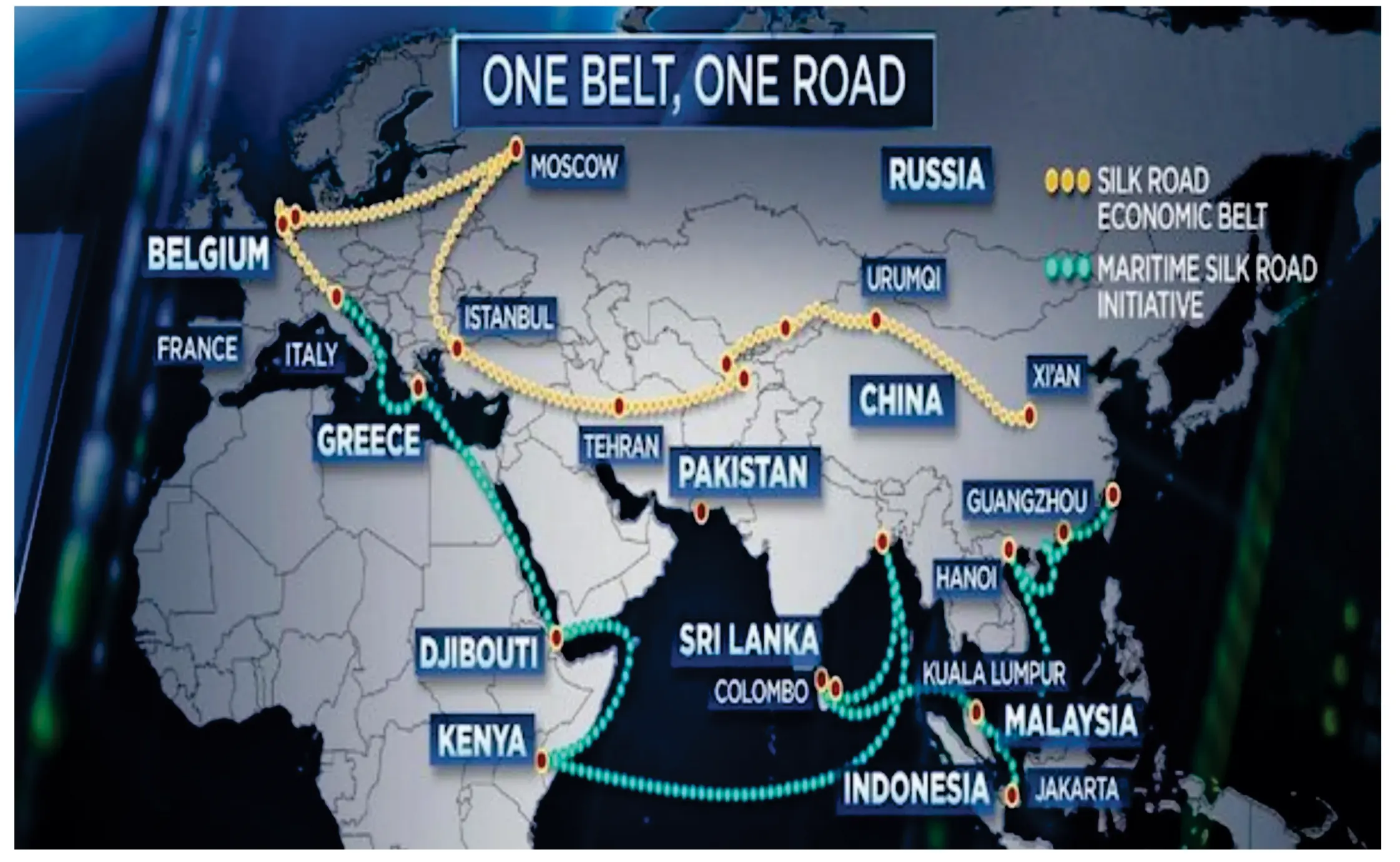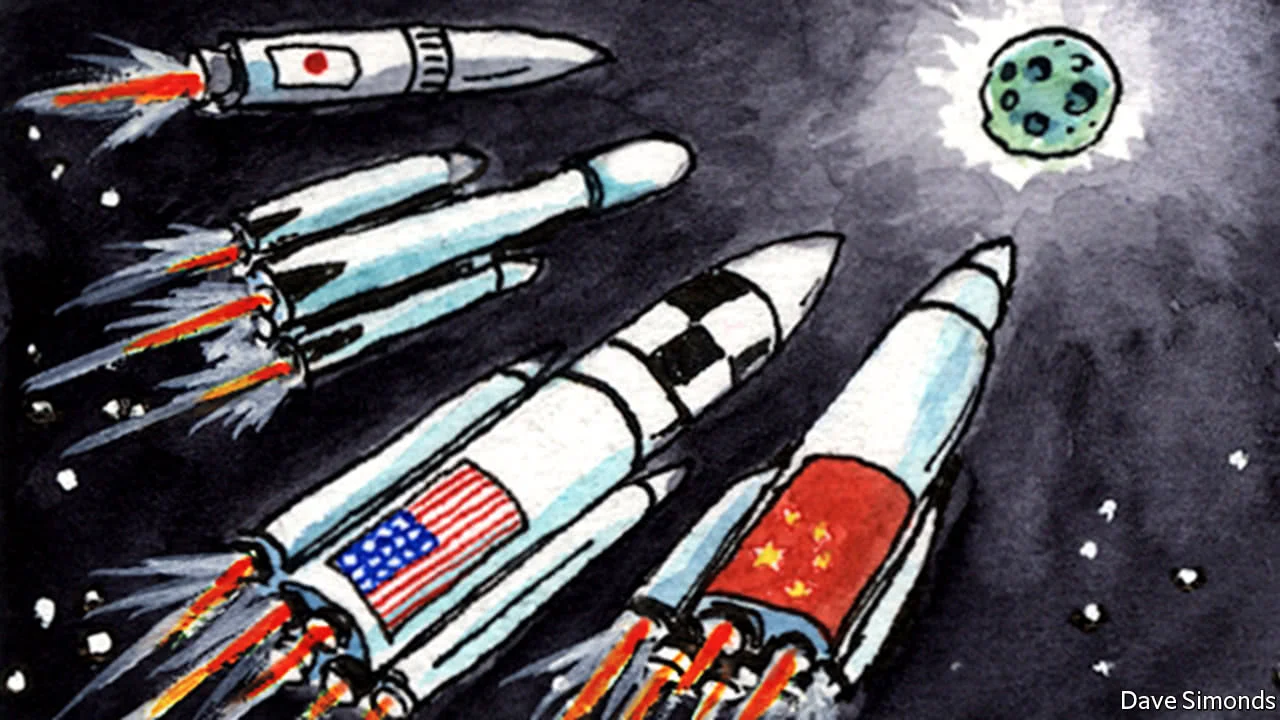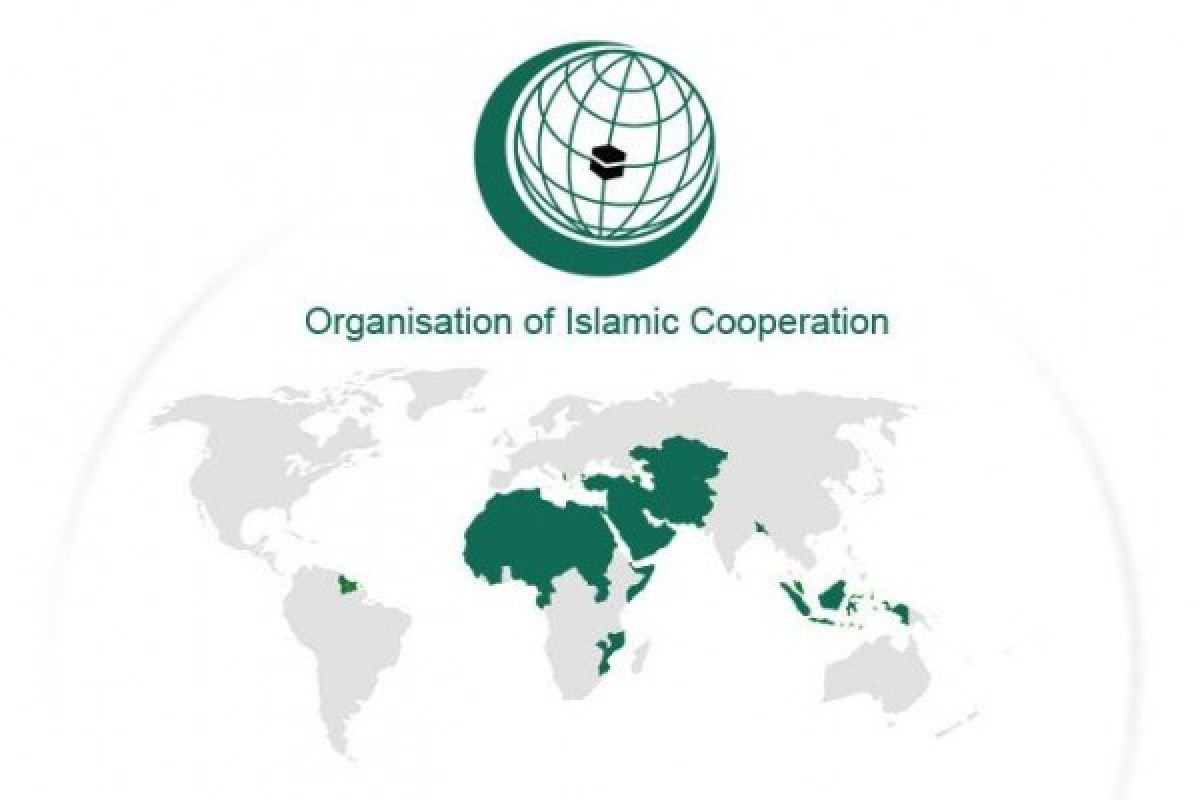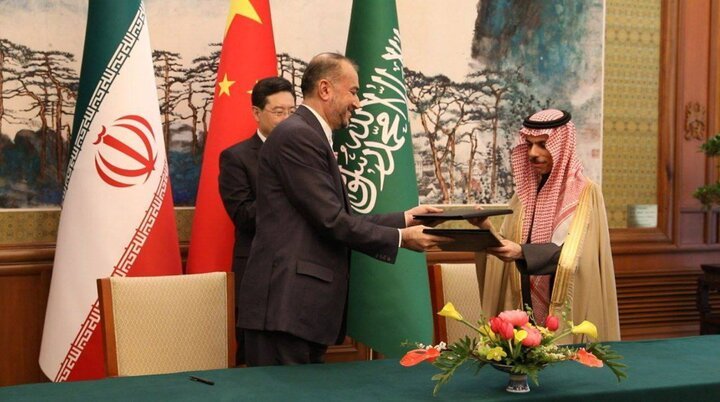
Background of Iran-Saudi Deal:
Here’s a simplified breakdown of the historical landscape:
- EARLY RELATIONS (1930S-1970S):
- Shared Oil Interests: Both countries were major oil producers and initially cooperated within CPEC.
- Regional Rivalries: These emerged as Saudi Arabia positioned itself as the leading Sunni power in the region, while Iran, under the Shah, sought to be a dominant Shia power.
- Cold War Dynamics: Both countries aligned with the West during the Cold War, but their rivalry continued.
. THE IRANIAN REVOLUTION (1979):
- Shifting Power Dynamics: The revolution led by Ayatollah Khomeini brought an end to the Shah’s rule, triggering a seismic shift in the region. Iran adopted a more assertive stance, supporting Shia movements across the Middle East.
- Heightened Tension: Saudi Arabia saw Iran’s revolution as a threat to its own stability and regional dominance. The two countries became embroiled in proxy wars and ideological conflicts.
- PERIODS OF DIALOGUE AND TENSION (1980S-2000S):
- Iran-Iraq War (1980-1988): Saudi Arabia, with Western support, backed Iraq during the war. This further strained relations.
- Intermittent Negotiations: Despite their rivalry, Saudi Arabia and Iran engaged in sporadic negotiations on various issues, particularly concerning the stability of the Gulf region.
- US Intervention in Iraq: The US invasion of Iraq in 2003 led to an increase in Iranian influence in the country, adding further pressure on Saudi Arabia.
- RECENT YEARS (2010S-PRESENT):
- Renewed Efforts for Dialogue: After a period of escalation, both countries have shown a willingness to engage in dialogue, driven by concerns about regional instability and the potential for conflict.
- Focus on Security and Economic Cooperation: Talks have primarily focused on security issues like Yemen, the fight against terrorism, and managing regional rivalries. Discussions on economic cooperation have also been initiated.
- Challenges and Setbacks: Despite progress, disagreements remain on key issues like the role of Iran’s nuclear program, its regional activities, and the conflict in Syria.
Impacts of Iran-Saudi Deal:
POSITIVE IMPACTS:
- Regional Stability: A deal could potentially reduce tensions and conflicts in the region, particularly in Yemen, Syria, and Lebanon, where both countries have been involved in proxy wars. This would have a positive impact on civilian populations and regional security.
- Economic Cooperation: Increased trade, investment, and energy cooperation could boost economic growth in both countries and the wider region. This could create jobs, improve infrastructure, and foster economic development.
- Reduced Regional Rivalries: A deal could help to lessen sectarian tensions and lessen the influence of extremist groups. This could lead to a more stable and cooperative regional environment.
- Increased International Cooperation: A successful Iran-Saudi deal could encourage greater international cooperation in tackling issues like terrorism, climate change, and global security.
- Improved Global Energy Markets: Increased cooperation between the two oil giants could lead to greater stability and predictability in global energy markets, benefiting both producers and consumers.
NEGATIVE IMPACTS:
- Limited Scope: A deal might only address specific issues, leaving other sources of tension unresolved. For example, a deal focusing on security might not address ideological differences or human rights concerns.
- Implementation Challenges: Implementing a deal could be difficult, as it would require trust-building, concessions, and a commitment to long-term cooperation.
- Internal Opposition: Both countries could face internal opposition to a deal, particularly from hardliners who oppose any rapprochement with their rival.
- Changing Regional Dynamics: A deal could shift regional power dynamics and influence alliances, potentially leading to new tensions and challenges.
- Increased Iranian Influence: Some worry that a deal could strengthen Iran’s position in the region, leading to concerns about its regional ambitions and its nuclear program.
Parties involved in Iran-Saudi Deal:
IRAN:
- Government: The Iranian government, led by Supreme Leader Ayatollah Ali Khamenei and President Ebrahim Raisi, would be the primary negotiator and responsible for signing an agreement.
- Revolutionary Guards (IRGC): The IRGC, a powerful military force with significant political influence, would have to be on board with any deal. Their views on regional security and Iranian interests are crucial.
- Clerical Establishment: The Iranian clerical establishment, including Ayatollah Khamenei and other religious figures, would have a significant say in any agreement, especially those impacting Iran’s relationship with the West and regional rivals.
- Parliament (Majlis): The Iranian Parliament would likely need to approve any treaty or agreement, particularly those impacting Iran’s economic or security interests.
SAUDI ARABIA:
- Government: The Saudi government, led by King Salman and Crown Prince Mohammed bin Salman, would be the main decision-maker and signatory.
- Royal Family: The influence of other members of the royal family, including key advisors and influential figures, would be critical in shaping Saudi policy.
- Security Forces: The Saudi security forces, including the Ministry of Interior and the Ministry of Defense, would have a significant role in assessing the security implications of any agreement.
- National Guard: The National Guard, a powerful force under the control of the Crown Prince, would also be a key player in any discussions regarding regional security.
BEYOND IRAN AND SAUDI ARABIA:
- Regional Powers: Other regional powers, including Iraq, the UAE, and Qatar, could play a role in facilitating or hindering a deal, depending on their own interests.
- International Actors: The US, the UK, and other Western powers could be involved in discussions, particularly those related to security and nuclear nonproliferation.
- Regional Organizations: Organizations like the Gulf Cooperation Council (GCC) and the Arab League could play a role in promoting regional stability and cooperation.
How Iran-Saudi deal effects different countries?
MIDDLE EAST:
- Gulf States:
o UAE and Bahrain: These countries, close allies of Saudi Arabia, might see a potential treat to their security if Iran’s regional influence grows. A deal could lead to increased competition and a recalibration of alliances.
o Qatar: Qatar, which has close ties to Iran, could benefit from a deal that promotes regional stability and economic cooperation. However, it could also face pressure to distance itself from Iran if the deal strengthens Saudi Arabia’s position.
o Oman: Oman, which has traditionally played a mediating role between Iran and Saudi Arabia, could see its role enhanced if a deal is successful.
- Iraq: Iraq, with its mixed Shia-Sunni population and close ties to both Iran and Saudi Arabia, could experience a complex situation. A deal might lead to increased stability and economic cooperation, but also raise concerns about potential Iranian influence.
- Lebanon: Lebanon, where Iran-backed Hezbollah has significant political and military power, might face a shift in power dynamics if a deal leads to a reduction of Iranian influence.
- Yemen: A deal could have a significant impact on the ongoing conflict in Yemen, as both Saudi Arabia and Iran have been involved in proxy wars. A potential reduction in tensions could lead to a ceasefire and peace negotiations.
- Syria: The conflict in Syria is deeply intertwined with Iranian and Saudi interests. A deal could potentially pave the way for a political solution to the conflict, though it’s unlikely to be a direct outcome.
International Players:
- United States: The US has been closely involved in the Middle East, with a strong relationship with Saudi Arabia and a complex relationship with Iran. A deal could reduce US military and diplomatic involvement in the region, although it could also raise concerns about Iranian influence.
- Europe: European countries, particularly those reliant on Iranian oil and involved in the nuclear negotiations, could benefit from a deal that reduces regional tensions and promotes economic cooperation.
- Russia: Russia has been a major player in the Syrian conflict and has close ties with Iran. A deal could potentially influence Russian involvement in the region, although its relationship with Iran is likely to remain strong.
- China: China has strong economic ties with both Iran and Saudi Arabia and is increasingly active in the Middle East. A deal could offer China opportunities for increased trade and investment in the region.
GLOBAL IMPACTS:
- Energy Markets: A deal could have a significant impact on global oil markets. Increased cooperation between Iran and Saudi Arabia could stabilize oil prices and reduce volatility.
- Nuclear Nonproliferation: A deal could contribute to international efforts to prevent the spread of nuclear weapons. However, it’s important to note that a deal between Iran and Saudi Arabia would not directly impact Iran’s nuclear program.
Challenges faced by Iran-Saudi deal:
. DEEP-ROOTED MISTRUST AND RIVALRY:
- Historical Conflicts: The two countries have been rivals for decades, engaging in proxy wars, ideological battles, and competing for regional influence. This history has created deep-seated mistrust and animosity.
- Sectarian Divide: The Sunni-Shia divide is a major factor in the Iran-Saudi rivalry. Both countries view each other through a sectarian lens, further fueling tensions.
- Regional Hegemony: Iran and Saudi Arabia have clashed over their aspirations for regional dominance, leading to competition for resources, alliances, and influence in countries like Yemen, Lebanon, and Iraq.
- DIVERGENT INTERESTS AND IDEOLOGIES:
- Nuclear Program: Saudi Arabia remains concerned about Iran’s nuclear program and its potential for developing nuclear weapons. Any deal would need to address these concerns, potentially involving stricter international monitoring and verification.
- Regional Activities: Saudi Arabia views Iran’s support for regional militant groups and its military interventions as a threat to its security. Addressing these concerns would require significant concessions from Iran, which may be unwilling to relinquish its regional influence.
- Ideological Differences: The two countries have fundamentally different ideologies and political systems. A deal would need to navigate these differences, which could be challenging given the deep-seated ideological divides.
- INTERNAL OPPOSITION AND POLITICAL PRESSURES:
- Hardliners: Both countries have hardline factions opposed to any compromise with their rival. These factions could derail a deal by mobilizing public opinion or exerting political pressure on their respective governments.
- Domestic Politics: Internal political dynamics in both countries could make it difficult for their leaders to make concessions and reach an agreement. Any deal would need to be acceptable to key domestic stakeholders and political factions.
- LACK OF TRUST AND TRANSPARENCY:
- Enforcement Mechanisms: Establishing reliable mechanisms for monitoring and enforcing any agreement would be crucial to ensure trust and prevent violations.
- Transparency and Communication: Open communication and a willingness to share information are essential for building trust and resolving disputes. However, this can be challenging given the history of mistrust between the two countries.
- REGIONAL DYNAMICS AND EXTERNAL INFLUENCE:
- Regional Alliances: Other regional powers, including the UAE, Qatar, and Turkey, could influence the dynamics of any deal. Their interests and potential reactions to a deal need to be considered.
- International Actors: The US, Europe, and other international actors could play a role in shaping the terms of any agreement, potentially adding complexity and pressure to the negotiations.
- ECONOMIC AND SECURITY CONCERNS:
- Economic Dependence: Saudi Arabia’s dependence on oil revenues could make it hesitant to make concessions that might threaten its economic interests.
- Security Implications: Both countries have significant security concerns about the potential for escalation and conflict. Any deal would need to address these concerns and ensure that it does not lead to instability.
How Iran-Saudi deal impact globally economically, politically and socially?
ECONOMICALLY:
- Oil Markets: A deal could significantly influence global oil markets.
o Increased Stability: Cooperation between the two major oil producers could lead to more predictable oil prices, benefiting both producers and consumers.
o Investment Opportunities: Increased stability and cooperation could attract more investment in oil production and infrastructure projects in both countries, stimulating economic growth.
- Trade and Investment:
o Regional Integration: A deal could open up new avenues for trade and investment between Iran and Saudi Arabia, and potentially with other regional players, fostering economic integration.
o Economic Growth: Increased trade and investment would stimulate economic growth in both countries, creating new jobs and opportunities.
- Financial Markets:
o Reduced Risk: A deal could reduce perceived risks for investors, leading to increased capital flows and economic activity.
o Foreign Investment: Both countries could attract more foreign investment, boosting their economies and creating new opportunities.
POLITICALLY:
- Regional Security: A deal could reduce tensions and conflicts in the Middle East, contributing to regional stability.
o Reduced Proxy Wars: It could lead to a reduction in proxy wars and conflicts in countries like Yemen, Syria, and Lebanon, benefiting regional security.
o Diplomacy and Dialogue: It could encourage diplomacy and dialogue between regional powers, promoting peaceful resolution of disputes.
- International Relations:
o Global Cooperation: A successful deal could create a positive precedent for international cooperation and conflict resolution.
o Nuclear Nonproliferation: While a deal between Iran and Saudi Arabia would not directly impact Iran’s nuclear program, it could create a more conducive environment for international efforts to prevent the spread of nuclear weapons.
- Power Dynamics: The deal could shift regional power dynamics, potentially weakening the influence of external powers and creating a more multipolar Middle East.
SOCIALLY:
- Interfaith Relations: A deal could improve relations between Sunni and Shia Muslims, potentially leading to greater tolerance and understanding.
o Reduced Sectarian Tensions: It could help to reduce sectarian tensions and violence, fostering a more inclusive and peaceful society.
- Human Rights: A deal could create pressure for both countries to improve their human rights records and address concerns about freedom of speech, religious freedom, and political participation.
- Cultural Exchange: Increased cooperation could lead to greater cultural exchange and understanding between Iran and Saudi Arabia, promoting tolerance and mutual respect.
POSSIBLE OUTCOMES:
- Successful Agreement: This would be a significant achievement and could bring about:
o Reduced Tensions: A more stable and peaceful Middle East, easing tensions in Yemen, Syria, and Lebanon.
o Economic Benefits: Boosted trade, investment, and energy cooperation, leading to economic growth for both countries and the region.
o Global Impact: Positive impacts on global energy markets, nuclear nonproliferation efforts, and international relations.
- Limited or Failed Agreement:
o Incomplete Progress: A deal might only address specific issues, leaving other sources of tension unresolved.
o Implementation Challenges: Even if a deal is reached, implementation could be difficult due to mistrust and internal opposition.
o Renewed Conflict: Failure to reach a deal or incomplete implementation could lead to renewed tensions and even conflict.
Conclusion:
It’s premature to draw a firm conclusion about an Iran-Saudi deal. The ongoing dialogue presents a glimmer of hope for regional stability and cooperation, but it’s important to remain realistic about the challenges and complexities involved. A successful outcome depends on the willingness of both countries to make compromises, build trust, and address their core concerns. The world will be watching closely to see if these negotiations lead to a lasting solution or another chapter in a long history of rivalry.


